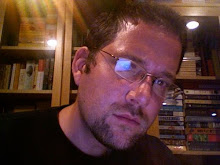
Here’s another chedi I modelled in SketchUp, this one from Wat Haripunjaya in the sleepy old town of Lamphun. I was going to post a shot of this one standing up in Google Earth, but the satellite map of that area is so unfocused that I can’t even find the town center, much less the temple. This model went much faster than the first one, mainly because I figured out how to match the perspective in my source pictures more accurately and so my guesses as to where things went weren’t quite as wild.
 While it had the huge disadvantage of not being on a mountaintop, I thought this chedi (and its surrounding temple) was in itself a lot more evocative than the more well-maintained one at Doi Suthep which I posted about yesterday - this chedi was much taller, and was wearing a couple huge silk sarongs, and had bells and electric lights and things dangling off it and birds perching on it and so on. Overall it seemed older, and was clearly revered but had aged in a slightly grungy way.
While it had the huge disadvantage of not being on a mountaintop, I thought this chedi (and its surrounding temple) was in itself a lot more evocative than the more well-maintained one at Doi Suthep which I posted about yesterday - this chedi was much taller, and was wearing a couple huge silk sarongs, and had bells and electric lights and things dangling off it and birds perching on it and so on. Overall it seemed older, and was clearly revered but had aged in a slightly grungy way. I had a really peaceful, dusty afternoon strolling around Lamphun, and a fine lunch afterwards in the dimmest restaurant I’ve ever been in. It was a cave. There were lights, but they must have been like 4 1/2 watt bulbs. The food cost maybe a third of what it would have in Bangkok, which is already pretty damn cheap. And that was the tourist restaurant written up in Lonely Planet.
As a kid I had always wondered how all those billions of Earth’s people you hear about live on $1 a week or whatever. It always seemed odd to me that they didn’t just starve. I guess the answer is that no matter how wretchedly destitute some average third-world schmuck might be, there are almost always other equally poor people just feet away selling him large and filling meals for just pennies. At least that’s how it seems to work in Thailand. And now you know, thanks to that observation, why it’s probably best for everyone that I didn’t go into economics. Or social work.







